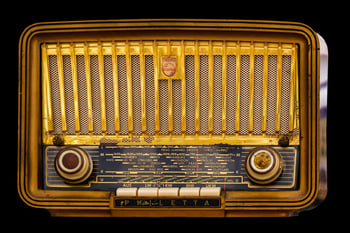Experts like to pretend that older technology is dying out in favor of the new. But it's far more likely that the old technology coexists alongside the new one because it fills a niche the latest technology can't completely fill.
One of these old, but not dead, technologies is radio. Understanding why people listen to the radio will give you a better understanding of how to use radio spots for marketing.
It Was Supposed to Die, But ...

The last 10 to 20 years have seen an explosion of new technologies. Satellite radio was one of the first on the scene, although it took a while to catch on. These radio stations are broadcast globally and offer music options that range from those comparable to what you might find on AM/FM radio to more obscure, carefully curated stations.
Online radio stations like Pandora started cropping up as high-speed internet access spread nationwide, but smartphones made these streaming services far more viable since suddenly users could take their music on the go. Apps such as Spotify and Google Play transformed how we listen to music.
Experts predicted that these options would swiftly replace radio, yet radio stubbornly holds on.
Why Radio Still Lives
Digital streaming and satellite radio seem like more attractive offerings, so why do people still prefer radio?
- It's free. Radio is supported by advertising. Unlike satellite radio and many digital streaming services, you'll never pay a penny for radio.
- It's widely available. When you listen to the radio, you don't need a pricey computer or a smartphone – just a device you can pick up for $15 or so. There's no need for an expensive data plan that'll run out: all you need is power. And every car comes with one, too. Radio's reach can't be beaten.
- It's local. Sometimes global isn't best. For news, weather and traffic, you want to know what's happening in your neighborhood.
- Music wins. Sure, a radio station probably won't be as niche as a satellite radio station or Spotify personal playlist; we know that and are okay with it. Radio excels at helping it's listeners discover new music while still providing a blend of predictable hits, and that hits a sweet spot for a lot of people.
- The personalities are fun. Radio personalities are what make radio fun to listen to. Whether it's the comforting intellectualism of a news-based announcer reading the news, or the zany antics of a "Morning Zoo"-type radio host on the drive to work, people tune into their favorite radio station because it's like a familiar friend.
- It's Reliable. When severe weather strikes, radio is the most reliable source of communication around. If (and when) the power goes out, all you need are some batteries and you'll have the latest information within minutes.
What This Tells Marketers
Radio has changed, but rest assured it still has the market penetration it always has. It continues to be a powerful tool for marketing, and a well-placed radio spot can do wonders to boost a brand's profile. Savvy marketers should take advantage of radio's local nature. This allows you to carefully select your market, especially when combined with an understanding of a station's demographics.
You can also leverage the most popular radio personalities and shows in your area. For instance, if there's a morning show with a charismatic host, you'll piggyback off the popularity by running an ad during that time – and you'll also manage to target an audience of adults on their way to work.
So, is radio dead? No. Instead, it's just evolved for a new era. And many of the reasons why people started listening to radio in the first place continue to be why people still listen. Radio spots remain a powerful addition to any marketing arsenal.
